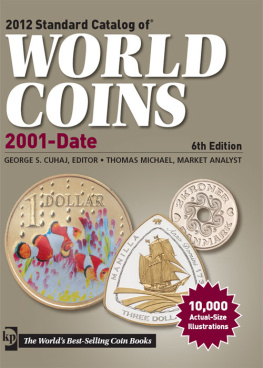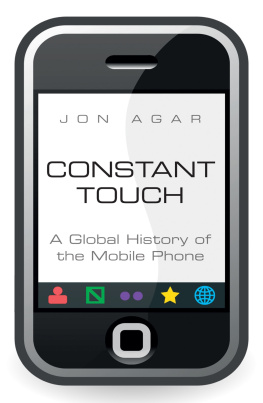Published by The History Press
Charleston, SC
www.historypress.com
Copyright 2019 by Joe Cuhaj
All rights reserved
Front cover: Old Stove Roundup. Mobile Public Library Digital Collections.
First published 2020
E-Book edition 2020
ISBN 978.1.43966.880.1
Library of Congress Control Number: 2019951266
Print edition ISBN 978.1.46714.354.7
Notice: The information in this book is true and complete to the best of our knowledge. It is offered without guarantee on the part of the author or The History Press. The author and The History Press disclaim all liability in connection with the use of this book.
All rights reserved. No part of this book may be reproduced or transmitted in any form whatsoever without prior written permission from the publisher except in the case of brief quotations embodied in critical articles and reviews.
This book is dedicated to my daughter, Kellie, and her love of history, proving that the apple doesnt fall far from the treewhile also proving Sir Isaac Newtons unwritten law, dont sit under apple trees.
INTRODUCTION
There are two things I absolutely love. First of all, I love to tell storiesshort nonfiction and humorous fictional stories, stories about our environment and wildlife, stories about everyday people.
My second love is history, but not just your everyday, run-of-the-mill you can find it in any textbook history, but hidden historylesser-known facts about people or events that have been lost in the mist of time.
But, full disclosureI am not an historian, nor have I played one on TV. I just have a deep-seated love of historysifting through dusty archives, gingerly turning the browning pages of well-worn books and going page by page through newspapers in archives. Heck, my DVR is usually overloaded with programs from the History and Smithsonian Channels.
I have been fortunate over the years to have been able to bring those two lovesstorytelling and historytogether. Whether its in my many outdoor recreation books, web content or print articles, every story I tell always ends up having some historical aspect that I quite often stumble upon, find fascinating and then embark down that rabbit hole on a trip to flesh it out and bring it to readers. And as I found out when I moved to Mobile almost forty years ago, there is no better place to tell those stories than right here in this three-hundred-plus-year-old port city.
What exactly is hidden history? I put that in quotes because it is a very subjective phrase. To me, and for the purposes of this book, I look at it in two ways. The first is the most obvioustruly hidden history, stories from the past that have been completely lost in the mists of time like the story of Reverend Shandy Jones or how Harpo Marx obtained his first real harp in Mobile.
Old meets new: Mobiles third cemeteryMagnoliabeneath the states tallest skyscraper, the RSA Tower. Authors collection.
Then there is the type of history that appears to be well known, but if you dig down deeper under the surface you will find some interesting twists and turns. For example, as you read through the book, you will undoubtedly see the names of some famous Mobilians whose stories youve probably heard before, like that of Augusta Evans Wilson, the first American female author to earn over $100,000. Many of us know her life story, but the underlying and lesser-known tale is of her propagandist writings for the Confederacy which adds to her legend and will give you a better understanding and perspective of her life.
Either way, my goal is to present some of these hidden historical gems in a way thats not stodgy like your old seventh grade history teacher would, but as a story where I hopefully give life to the event. As you scan the pages you will read a bit of basic textbook Mobile history, but thats only a primer to refresh your memory and give you a little perspective into what lies ahead.
But before we get into the hidden history of the Port Cityor Azalea City, as it is also knownyou might be asking yourself, what makes Mobile, Alabama, so special? Plenty! As the State of Alabama was celebrating its bicentennial in 2019, Mobile was celebrating its 317th. But the citys history begins way before that, and its all because of the water.
If you take a look at the Alabama state seal, you will be struck by one thingit is a wet state. The seal depicts all the major rivers that flow through the state. Over the years, these waterways have been the backbone for the states economy and growth. Many of those thousands of miles of creeks, rivers and streams flow southward, carrying with them rich nutrients as they join together to form five rivers: the Mobile, Spanish, Tensaw, Apalachee and Blakeley. Taken together, these five rivers create the second-largest river delta in the country, the Mobile-Tensaw. It is here in this rich, fertile environment of veining backwaters and bayous that Native Americans first established themselves thousands of years ago. Tribes like the Alabamu, Tomeh and Mabila lived along the fruited banks in palm-thatched villages or atop towering earthen mounds.
Those rivers continue to flow southward, eventually joining together to form a wide bay that was named for one of those tribes and where the future port city would riseMobile Bay. (Mobile is the anglicized version of Mabila.) The city that was built here became a prized possession for several nations: Spanish conquistador Alonso lvarez de Pineda first explored this land in 1519, engaging with the native tribes and bringing with him devastating European diseases. The French government first settled here in 1702, establishing a ramshackle fort they called Fort Louis de la Louisiane in 1702 on the Mobile Rivers 27-Mile Bluff, only to move fifteen miles downstream nine years later to where present-day Mobile is located. The British won the settlement following the signing of the Treaty of Paris with France that ended the French and Indian War (also known as the Seven Years War) in 1763. Spain then claimed the territory after invading it in 1780 only to have it taken away by the United States in 1813.













